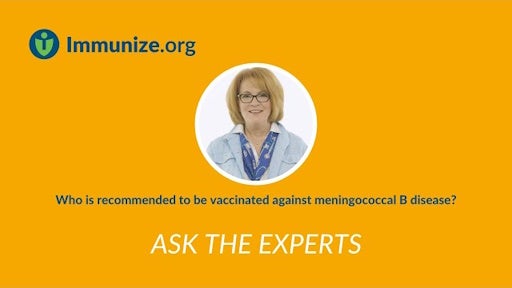- Meningococcal B
- Disease Issues
Please tell us about meningococcal disease.
Meningococcal disease is a bacterial infection caused by Neisseria meningitidis. Meningococcal disease usually presents clinically as meningitis (about 50% of cases), bacteremia (30% of cases), or bacteremic pneumonia (15% of cases). N. meningitidis colonizes mucosal surfaces of the nasopharynx and is transmitted through direct contact with large-droplet respiratory tract secretions from patients or asymptomatic carriers. Meningococcal disease can be severe. The overall case-fatality ratio in the U.S. is 15%, and 10%–20% of survivors have long-term sequelae such as neurologic disability, limb or digit loss, and hearing loss.
N. meningitidis is classified into 12 serogroups based on characteristics of the polysaccharide capsule. Most invasive disease (such as meningitis and sepsis) is caused by serogroups A, B, C, W, X and Y. The relative importance of serogroups depends on geographic location and other factors such as age. Between 2011 and 2020 in the United States, serogroup B caused about 60% of cases among children younger than 5 years old, and serogroups C, W, or Y caused about two out of three cases in people age 11 years or older. Serogroup A is rare in the U.S. Historically, serogroup A was common in the meningitis belt of sub-Saharan Africa, but after the implementation of a meningococcal serogroup A conjugate vaccine campaign, serogroup A disease has been nearly eliminated in the meningitis belt.
Nasopharyngeal carriage rates are highest in adolescents and young adults who serve as reservoirs for transmission of N. meningitidis.

